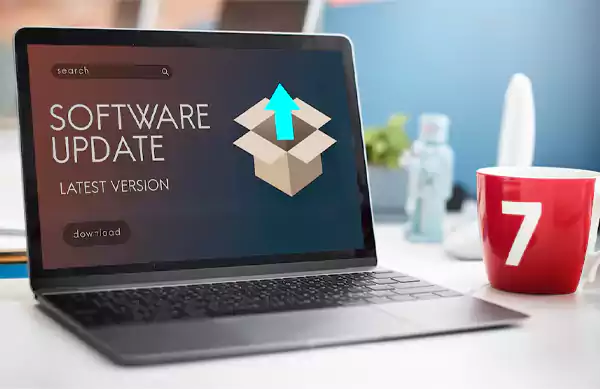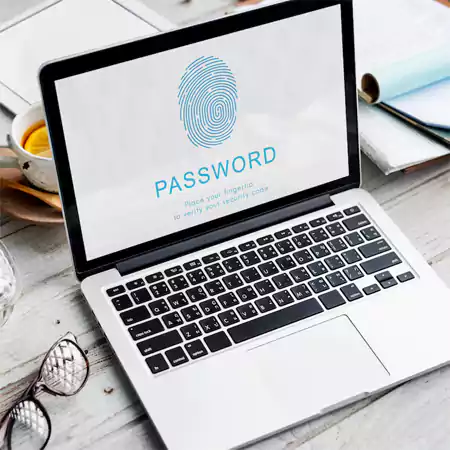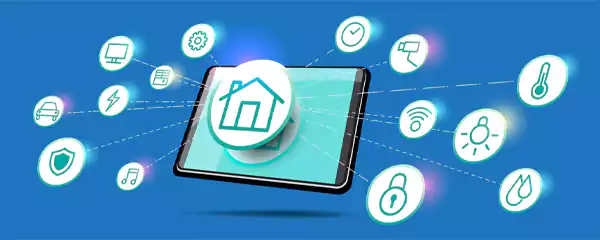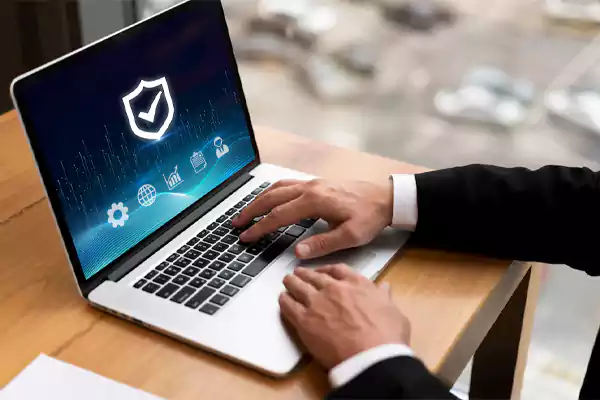
In this modern era of digitalization, data theft and other cyberattacks have become a common occurrence. It’s crazy how even big companies like Uber, eBay, LinkedIn, Yahoo, Microsoft, and Facebook have been hit by data breaches once or more. No matter how big or small the organization is, cyberattackers are always lurking to find vulnerabilities.
Therefore, it’s better to implement cybersecurity measures to make sure your organization is shielded against data theft. Considering that, let’s read about different ways to mitigate risk in cybersecurity, and see how it can prevent future cyberattacks and protect your digital information.
Let’s look at some ways to mitigate risk in cybersecurity.

Installing antivirus software can protect your device from malware such as viruses, worms, and spyware. This type of software examines your system and detects malicious activity if any. After that, it removes the malware from your device and protects it from any potential harm.

Update your systems and software programs thoroughly, as soon as the new version drops. It is one of the best ways to mitigate risk in cybersecurity. Do not let hackers take advantage of any loopholes in the operating systems or software programs.
Usually, hackers try to find a weak spot in your system or software to plan a cyberattack. Timely updating software not only secures your device but also offers additional features and fixes previous bugs.
The best program to prevent cyberattacks is Wireshark. It’s a smart security measure that auto-updates your device and shields it from potential cyberattacks.

Spread awareness regarding phishing scams, which usually consist of fishy emails or texts. These scams trick people into revealing their personal information or sensitive data to cyberattackers pretending to be someone you may know. Do not click on suspicious links because they may carry malware and can disrupt your device. Always stay alert and check the identity of the sender and never download any attachments from unknown emails or messages.

Activate two-factor authentication for your online accounts to make them more secure. Two-factor authentication not only demands your password, as well as a second form of verification to make sure it’s you. The second verification can be a special code sent to your email or phone number.
Enabling this adds an extra layer of protection to your accounts and makes it very hard to hack. Even if anybody steals your password, still they won’t be able to access your account without a verification code.

Educating your staff and employees about potential spam links and data threats can ensure the identification of the bug or malware in the initial stage because there are risks and mitigation of insider threats. Awareness training of employees on cyber threats like phishing scams, malware, and smishing is very important.
Most employees can’t differentiate between legitimate emails and phishing email scams and accidentally provide scammers access to sensitive data, leading to data theft. By raising awareness on how to identify and respond to cyber threats, you can shield your organization’s data from cyberattacks.

Activity monitoring means keeping close track of everything happening in a digital space. This can involve monitoring user activities, file access, changes made to data, and tracking or recording user’s behaviour within a network. By keeping an eye on these activities, cybersecurity can detect suspicious behavior and can help prevent a security threat, data breach, or any kind of cyberattack.

Sharing data with another party without proper security measures can result in a data breach. Encrypt your important data to keep it safe, do not share it in plain text format because this will make it easier for hackers to break into it.

In the contemporary era of digital intelligence, cracking passwords is no longer a challenging task anymore. The root cause of most data breaches or thefts is weak passwords.
So, put efforts into creating complex passwords for sensitive information and important data. Use a combination of alphabets, numbers, and special characters to make sure the password is unique and can protect you from potential cyber threats.

Apart from encrypting all the important information, always keep a backup of all your important information. Store critical information at least in 3 separate locations so that backup availability is there in case of a data breach. Consider storing data in 2 different media types and 1 in offline storage option.
During a data breach, it is normal to lose access to files, so make sure you have invested in cloud backup and local storage. Keep the location of the files as secure as possible by layering and implementing other measures to ensure only authorized personnel can access the information.

Sometimes individuals with access to confidential information can misuse or may unknowingly fall for a phishing scam that can lead to data breach, risks, and mitigation of insider threats. As a precautionary measure, keep an eye on suspicious activities and provide security awareness training to the staff.
Insiders also have access to physical data, files, and confidential information which can be easily vandalized by them. Therefore, it is important to have security cameras, access controls, and secure storage facilities to safeguard and protect data from physical theft and authorized access.

The name itself explains the mitigation step, protecting your Wi-Fi and all the devices connected to it so that you keep your network safe from any potential threat or unwanted access.
Set up a strong password for your Wi-Fi and regularly update your router’s firmware to mitigate any vulnerabilities.
Also, encrypt your Wi-Fi network to secure the data transferred between your device and the router. Moreover, stop using public Wi-Fi to avoid eavesdropping and potential cyberattacks.

Download your apps from trusted sources. When you download apps from unverified sources, you expose your device to harmful software. Third-party app stores do not have exact levels of safety checks, and the apps may ask for excessive permissions.
Look for signs like the number of downloads, ratings, and reviews. As a security measure, use official app stores like Google Play Store or Apple App Store for downloading apps.

Access controls and user permission make sure only the right people can gain access to your data and systems. It includes things like biometrics, permissions, and passwords that control who is allowed to edit, comment, view, or delete information. This feature restricts interference within the organization and secures sensitive data from unauthorized access and security breaches.

What’s better than a security health checkup to make sure your digital systems are working perfectly and have no weaknesses. Security audit experts review your system’s security measures, policies, and areas of improvement. Additionally, risk assessments identify potential threats in your systems. They analyze vulnerabilities so that you can pre-plan how to mitigate future threats.

After all the ways to mitigate cyberattacks, incident response planning is the most crucial one because we should all be prepared for the worst-case scenario. If a cyberattack occurs, one should know who to contact, how to handle the situation, and how to bounce back from the damage.
Incident response planning can help you reduce the impact of the attack and restore peace of mind. Regularly practicing and reviewing these plans can prevent you from cyberattacks efficiently.
It’s hard to secure data without proper cybersecurity measures. By not acknowledging the need for cybersecurity solutions, companies are making their businesses vulnerable to data breaches. They are at constant risk of data exploitation, theft, and misuse of confidential information, which calls for an immediate need for cybersecurity measures.
It’s high time the authorities must take steps to prevent cybersecurity fraud by implementing software programs. Seeking assistance from software programs will help companies secure their data against unauthorized access by third parties. Today we are connected to devices and networks more than ever before. This will only continue to grow, hence the importance of cybersecurity has become more, regardless of a person’s occupation.
Data leaks and identity theft are so common these days because we save personal and confidential information on our devices without any safety precautions. Data breaches can cost you money, reputation, and even personal safety. Therefore, it is essential to prioritize securing your systems and software programs from cyberattacks. Some ways to mitigate risk in cybersecurity are antivirus software programs, strong passwords, and end-to-end encryption.
In the context of cybersecurity, mitigating means reducing the risk or effect of a cyberattack. Timely software updates, encrypting data, password protection, and keeping backups are some of the ways of eliminating cyberattacks.
Small businesses can shield themselves from digital attacks by installing antivirus software programs and using end-to-end encryption. Furthermore, they also keep their software updated to fix the bugs that can invite digital threats.
Some cybersecurity preventions are:
Inform higher authorities, create backup files, try to isolate systems that are under cyberattack, check security cameras, and monitor activity tracking sources.
